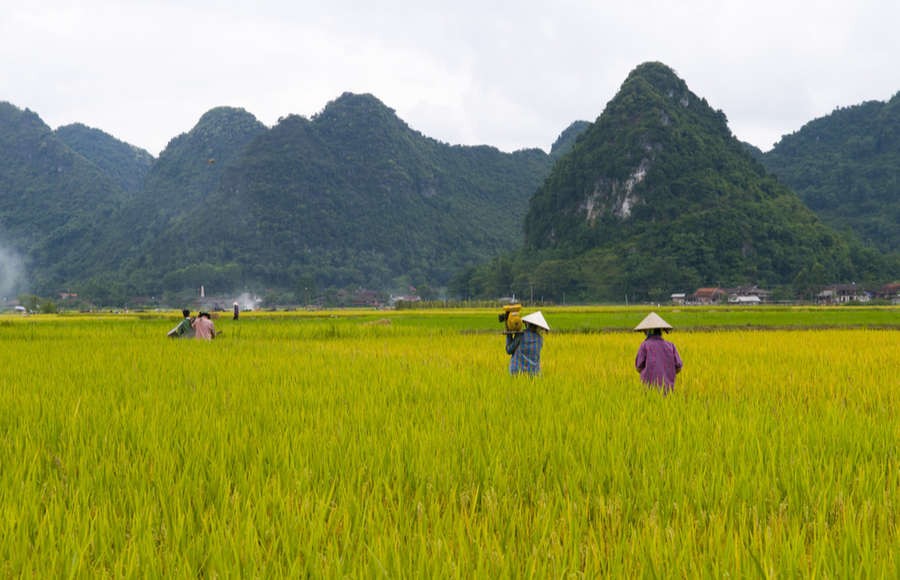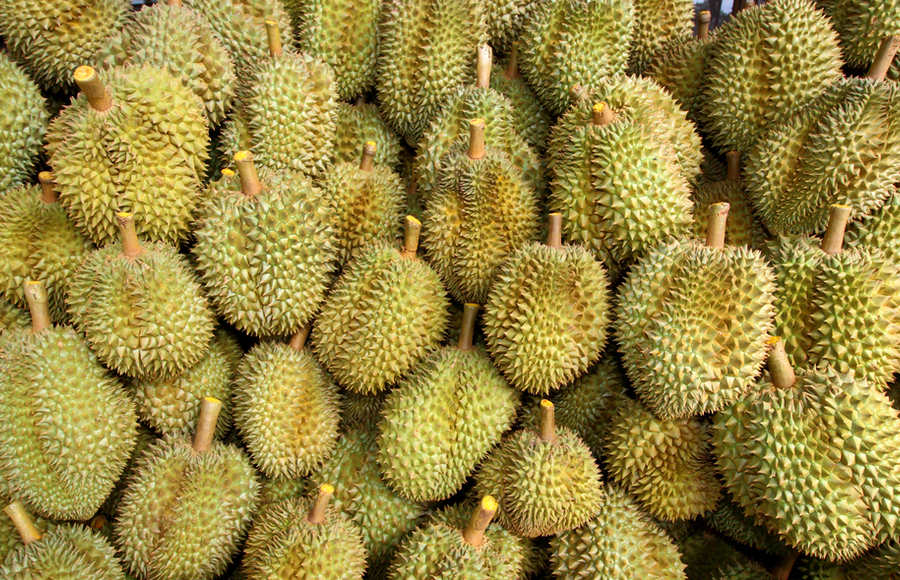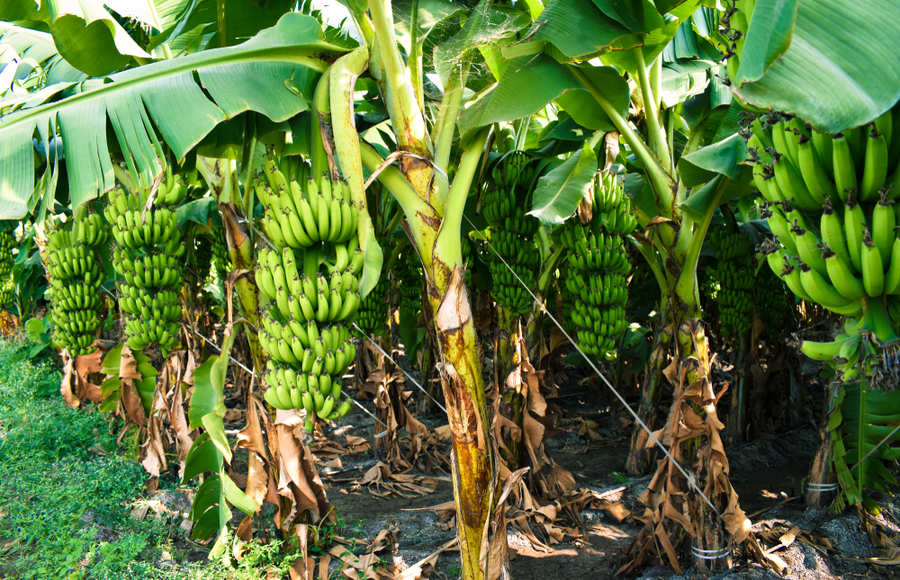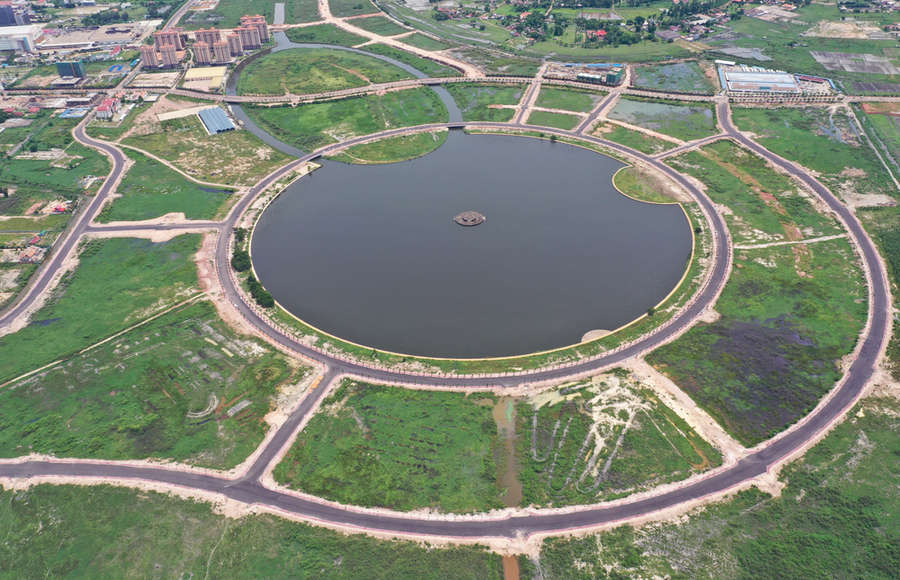I WANT
RELATED LINKS
I WANT
RELATED LINKS
RELATES LINKS
I WANT
RELATES LINKS
Services
Related Links
Use and Management of Cookies
We use cookies and other similar technologies on our website to enhance your browsing experience. For more information, please visit our Cookies Notice.
- Personal Banking
- Stories & Tips
- BUSINESS MAKER
- Agricultural Products, the Hope of the Lao Economy
- Personal Banking
- ...
- Agricultural Products, the Hope of the Lao Economy
Agricultural Products, the Hope of the Lao Economy
28-01-2022
Lao PDR is one of the CLMV countries showing relatively high economic growth of over more than 5% on average (five years before the COVID-19 outbreak). In December 2021, the nation completed a Chinese-backed railway project under the Belt and Road Initiative (BRI) which is expected to boost its economy even further as the route will play an important role as a land link connecting the Southeast Asian economy with China and Europe.
Despite the broad effects of the coronavirus outbreak, the Lao people have started to adapt to new lifestyles focusing more on consuming products and services within the country and less on imports. This trend will help drive production in the agricultural sector and demand for labor in many sectors, increasing household incomes. Demand for the country's agricultural products is expected to increase in foreign markets. In the future, Lao PDR has set a goal of becoming a top organic agricultural producer and exporter. The main agricultural products generating income for Lao PDR currently are:

Rice is mainly an export product for Lao PDR. In 2020, the economic recession caused by the COVID-19 pandemic was aggravated by natural disasters pushing down agricultural productivity, especially rice. Production was insufficient even for domestic consumption, driving the price of domestic production higher than imported rice. The government aimed for 4.35 million tons of rice but produced only 3.7 million tons due to weather conditions, plant diseases, and insects destroying crops. If the harvest was as planned, Lao PDR would have been able to reduce rice imports from abroad by up to 100,000 tons.
Under an intergovernmental agreement, Laos has been granted an annual quota for 50,000 tons of rice and 500,000 cattle and buffaloes for export to China. To be more self-reliant, this year the government has encouraged more rice farming as the main commodity for exports.

“Durian” With the government's plan to export durian, primarily to China, the fruit is becoming a product that generates income for the country. Lao PDR imports durian saplings from other countries and primarily grows them in Champasak Province, both native and Mon Thong varieties. Exports are expected to begin in 2024. Chinese investors have applied to the government for land concessions of approximately 30,000 rai (4,800 hectares) for the cultivation of durians. The reason for the increase in Laotian durian exports is due to the country's free trade agreements (FTAs), which allow Laos to enjoy import duty exemption from 16 countries, including China, Italy, New Zealand, Japan, India, and others.

Bananas have surpassed rice as the country's most important agricultural export. According to data from the Ministry of Industry and Trade, the value of banana exports to foreign countries reached USD 227.4 million in 2020. This represents a 14.96 percent increase over the previous year, with China and Thailand being the primary customers. The majority of producers are contract farmers, but the government has suspended land concessions and terminated contracts with a large number of companies that violated rules. As a result, there are fewer banana farmers. The government believes that banana cultivation should follow Good Agricultural Practices (GAP) and other policies to promote clean environmentally friendly sustainable agriculture.

Rubber is one of Lao PDR's economic crops generating significant revenue, with plantations occupying approximately 37 thousand hectares in the province of Luang Namtha. The price per kilogram is 8,000 kip (approximately 30 baht), while cup lump is sold at 3,500 kip/kg (approximately 13 baht). Despite the fact that the selling price is not very high, rubber has the potential to generate a significant amount of revenue for the country, thereby improving living conditions. As a result, the government encourages rubber planting and the formation of rubber associations to serve as learning centers for rubber cultivation and to boost bargaining power.

Farming patterns in Laos:
Type 1: Small landowners who handle their own work and investment with knowledge obtained from informal partners from China.
Type 2: Farmer organizations, which are rare due to lack of management.
Type 3: Contract farming with foreign investors.
Form 4: Land concessions for farming.
According to statistics, around 75% of farming in the country operates under Types 3 and 4. This presents opportunities for Thai investors to enter into agricultural business in Laos where local production is still insufficient for domestic consumption. The country still needs funding, mainly for improving production facilities, the purchase of fertilizers and animal feed, and upgrading technology for cultivation and the processing of agricultural products. It is therefore a good opportunity for Thai entrepreneurs to export agricultural products to Lao PDR and to invest in an agricultural industry that requires knowledge and skills while sharing modern technology to help increase agricultural productivity so that the nation can provide enough for domestic consumption and increase export value. It is also an opportunity to expand the market for agricultural equipment.
Customers interested in doing business in Lao PDR can contact the Siam Commercial Bank Vientiane Branch, which is ready to provide any services they need.
Information courtesy of the Siam Commercial Bank, Vientiane Branch: https://www.scb.co.th/th/corporate-banking/international-network/laos.html
References:
1.DITP. “นักลงทุนสนใจเข้ามาลงทุนด้านเกษตรกรรมในแขวงบอลิคำไซมากขึ้น”. https://www.ditp.go.th/ditp_web61/article_sub_view.php?filename=contents_attach/722070/722070.pdf&title=722070&cate=574&d=0 (ค้นหาเมื่อ 23/3/64)
2. DITP. “ข่าวเด่นประจำสัปดาห์ระหว่างวันที่ 8-12 มีนาคม 2564”. https://www.ditp.go.th/ditp_web61/article_sub_view.php?filename=contents_attach/730365/730365.pdf&title=730365&cate=574&d=0 (ค้นหาเมื่อ 23/3/64)
3.DITP. “ข่าวเด่นประจำสัปดาห์ระหว่างวันที่ 8-12 กุมภาพันธ์ 2564”. https://www.ditp.go.th/ditp_web61/article_sub_view.php?filename=contents_attach/721709/721709.pdf&title=721709&cate=574&d=0 (ค้นหาเมื่อ 26/3/64)
4. Globthailand. “สปป.ลาวส่งออกสินค้าเกษตรไปจีนร้อยละ 80”. https://globthailand.com/laos-31072020/ (ค้นหาเมื่อ 26/3/64)
5.สำนักข่าวกรองแห่งชาติ. “สาธารณรัฐประชาชาติไตยประชาชนลาว”. https://www.nia.go.th/newsnow/almanac-files/static/pdf/2564/%E0%B8%A5%E0%B8%B2%E0%B8%A7_2564.pdf (ค้นหาเมื่อ 2/4/64)
6.Globthailand. “สถาบันค้นคว้าเศรษฐกิจแห่งชาติเผยแพร่รายงานประเมินสภาพเศรษฐกิจมหภาคของ สปป.ลาว ปี 2563”. https://globthailand.com/laos-020321/ (ค้นหาเมื่อ 2/4/64)
7. The Standard. “ลาวมีรายได้จากส่งออกสินค้าสินค้าเกษตรเกือบ 3 หมื่นล้านบาทในปี 2020 เผยไทยกับจีนเป็นลูกค้าหลักซื้อกล้วย 7 พันล้านบาท”. https://thestandard.co/laos-agricultural-exports-in-2020/ (ค้นหาเมื่อ 16/4/64)
8. DITP. “รอบรู้เศรษฐกิจ ตามติดตลาดโลก”. https://www.ditp.go.th/contents_attach/99270/99270.pdf (ค้นหาเมื่อ 16/4/64)
9. Xinhua. “ลาวปลื้มมูลค่าส่งออก “ยางพารา” เพิ่ม สะท้อนความสำเร็จเชิงพาณิชย์”. https://www.xinhuathai.com/eco/83715_20200303 (ค้นหาเมื่อ19/4/64)
10. DITP.”ข่าวเด่นประจำสัปดาห์ สคต.เวียงจันทน์ ฉบับที่ 2 ประจำเดือนตุลาคม 2564”. file:///D:/Users/s62013/Downloads/754291%20(1).pdf (ค้นหาเมื่อ 17/11/64)
Related Product Or Service
Related Stories
- Cambodia's booming healthcare business Open left rail for additional features
- Doing business in Vietnam and winning your partner’s heart (Business Culture and Etiquette) Open left rail for additional features
- Myanmar E-Commerce Market - Growing Trade Opportunities Open left rail for additional features
